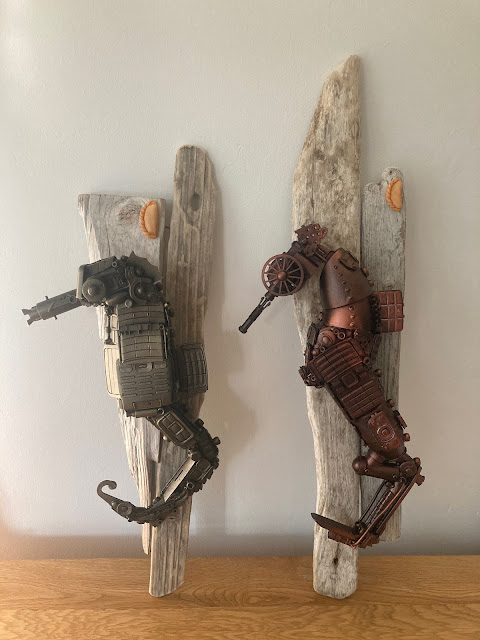I'd made a scorpion.
Now I had to think about what else to make. And I quite fancied making a few sea-themed beasties. I was particularly keen to make a seahorse or two as a way to highlight the fact that ALL species of seahorse are now considered as vulnerable.
Photo by Ben Stiefelhagen
Over 150 million of these beautiful, harmless little fish are pointlessly killed every year for use in the traditional medicine trade despite the fact that there is no scientific proof whatsoever that they can cure ailments. Additionally, millions are caught to sell to home aquarium owners or are dried for sale as curios and souvenirs.
They are also threatened by climate change. Seahorses commonly live in seagrass beds, mangroves and coral reefs which are all highly sensitive to pollution, fluctuations in temperature and acidic levels, and other human impacts.
One big contributor to climate change is, of course, our hunger for electronic items - such as mobile phones - and so, as I still had a massive sack full of old phone cases, they seemed to me the perfect materials with which to make some seahorses.
Here's a maker video. After that is a blow-by-blow description of construction.
So, I started with a core shape carved from polystyrene packaging. I attched some phone bits and other greeblies all over it, gave it a spray of black primer, then a light zenithal highlight in gold and voila - brass-effect seahorse.
People like whales, right?
So, again, I used polystyrene packaging to make a basic form and began attaching bits and pieces. Fully 16 phone cases and keypads, plus a multitude of beads and other greeblies went into the construction. In fact, I was so engrossed that I forgot to take many WIP photos. Sorry!
I then sprayed it with black primer.
I then used a white spray can to create a two-tone colour scheme, like you see on humpback whales and other species of cetaceans.
I'll show you the very final model later in this blogpost.
Meanwhile, I created a second seahorse.
A different construction with no inner core this time ... but a fun challenge all the same.I started with plastic pieces from deodorant cans, shampoo bottles and kitchen bleach sprays Then I added a piece of plastic I found on a dog walk as the snout/mouth. I added some wooden toy cartwheels for eyes and a yoghurt drink pot for the lower body. Then I began decorating with lots of phone parts, beads and other greeblies.
To finish them for display I mounted the two seahorses on some driftwood I'd collected during my frequent trips to Cornwall.
For the whale I made a custom base from an old cheeseboard and a repurposed wooden finial I spotted in a skip (and asked permission to take). I then gave it a coat of nice blue chalk paint.
So, here are the finished pieces - a whale and two seahorses. I hope you like them.
(BTW the little Cornish pasties you can see are my maker's mark).
On a final note I should point out that this urge to make sea-themed art is obviously in the Colgan family's Cornish blood. My late father was an enthusiastic amateur and often painted seascapes. Here's one from the mid-1970s.
And here's a collage made by one of my daughters for her GCSEs nearly two decades ago - all made from fabric scraps, buttons and unravelled old woollens. I love it. And it, like Dad's painting, hangs with pride in my house.
_____________________________________________
It occurred to me after writing this post that some terms may be unfamiliar to you.
So, if you want to know what 'greeblies' are, click here and here.
And if you want to know what a 'zenithal highlight' is, click here.
They explain it much quicker than I could in writing.


















No comments:
Post a Comment